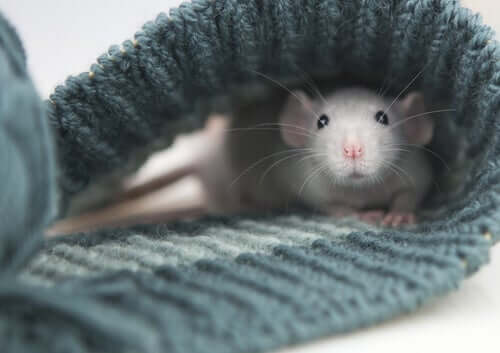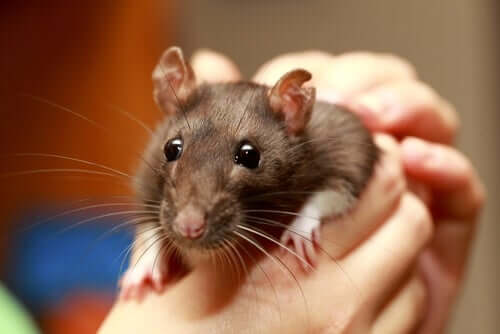How Would You Like to Have a Pet Rat?

These kinds of rodents are often associated with negative factors. They’re mainly rejected for fear of disease and many are disgusted by the mere thought of them. However, there are currently many households with a pet rat.
(Perhaps the movie Ratatouille had something to do with it.)
In any case, today we’re going to give you some information that may surprise you about these cute, tiny animals.
To have a pet rat, or not to have a pet rat, that is the question
First of all, it’s quite clear this question won’t be easy to answer. There are many factors to take into account when it comes to selecting a pet. Personal, economic, and health factors and in the case of having a pet rat, you could add the psychological factor to the list.
It may be due to the fact that rats have a bad reputation and people associate them with negative traits and harmful activities in general. This rodent may be the one species that’s most rejected by human beings (aside from spiders).
This is mainly the fault of history. For example, the black plague that struck Europe in the fourteenth century was largely associated with rats.
You may have not heard about it but it turns out they were wrong. In fact, the latest published research studies now state it wasn’t the rats. Instead, a combination of fleas, lice, and overall lack of hygiene was all the real cause of the demise of a third of the population.
Of course, this knowledge may surprise you. And what if we told you that pet rats are not a new thing, and that having a pet rat was actually in fashion hundreds of years ago?
The breeding of the domestic rat

The first records in regard to domesticated rats date back to the eighteenth century. Unfortunately, the first ones were trained for a sport called rat-baiting, and many died as a consequence. However, the breeding and collection of rats of different colors and sizes were quite popular back then.
It wasn’t until the nineteenth-century that rats began to gain fame as domestic pets. In the 70s, the National Fancy Rat Society was founded in England. They sort of stated the basics for the breeding of the rat (Rattus norvegicus) as a domestic animal. Today, a pet rat is a phenomenon that’s quite common throughout the planet.
A pet with many advantages
Having a rat as a pet means being in the company of a loving and highly intelligent animal. These rodents are social animals and also very playful. They’re not usually aggressive. In fact, not at all. This is what makes them ideal pets for children.
In addition, rats have great intelligence and are easy to train. You can teach them a couple of simple tricks with a little bit of patience. Of course, you have to follow some guidelines to provide proper living conditions for your pet.
Care and feeding of a pet rat

then you may want to know a few things in regard to their breeding and feeding.
As for the cage, make sure it’s wide enough for them to be comfortable. If you have space, get yourself a cage that allows them to run around and move freely. It should also have a lair where they can sleep or just rest. You may not believe it but rats are in fact tidy animals. In any case, make it a habit of cleaning their cage at least once a week.
The feeding of your pet rat should consist of food specifically designed for rodents as it will provide all the nutrients they need. However, you can complement it if you wish. You may add pieces of peeled fruit and vegetables.
The final decision is up to you. As you can see, having a pet rat is not unusual at all and it can be truly satisfying.
All cited sources were thoroughly reviewed by our team to ensure their quality, reliability, currency, and validity. The bibliography of this article was considered reliable and of academic or scientific accuracy.
Dean, K. R., Krauer, F., Walløe, L., Lingjærde, O. C., Bramanti, B., Stenseth, N. C., & Schmid, B. V. (2018). Human ectoparasites and the spread of plague in Europe during the Second Pandemic. Proceedings of the National Academy of Sciences, 115(6), 1304-1309.
This text is provided for informational purposes only and does not replace consultation with a professional. If in doubt, consult your specialist.